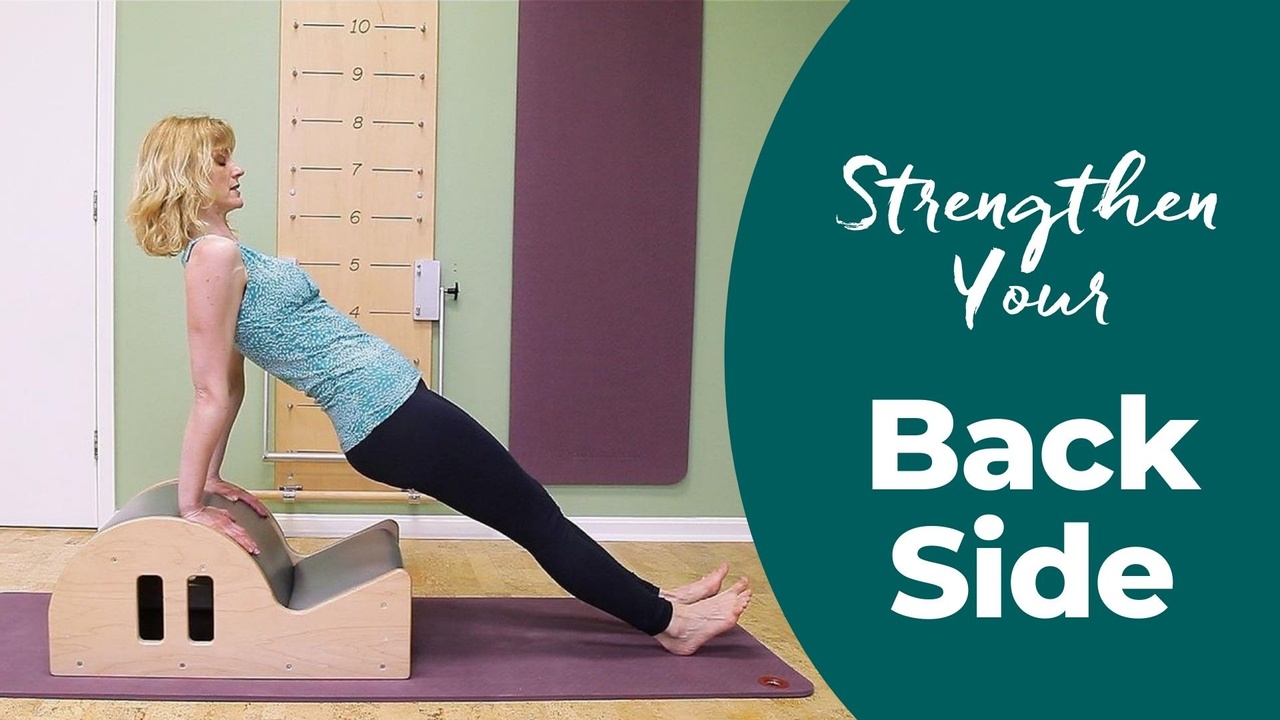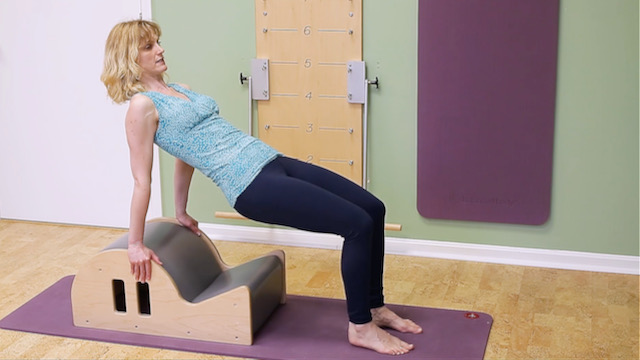Leg Pull: Don't Forget to Strengthen The Backside Of Your Body
Jul 22, 2019
In our daily lives, we spend most of our time shortening (and collapsing) the front side of our bodies. Sitting and slouching, for instance, shortens our hip flexors, pectorals, and abdominals. Many of our beloved Pilates exercises also shorten and contract the front side of our bodies. We warm up with supine exercises, like the Stomach Series and variations of the Roll Down. All of these are flexion-based exercises that contribute to the imbalance of our bodies.
If we're lucky, we spend maybe five minutes towards the end of the class on our stomachs (prone). In order to counteract the many hours of flexion, I would recommend you should spend at least a third of the class with exercises such as Swan and Swimming.
Put together balanced Pilates classes
With My Free Class Planning Template
As a result, our poor backsides get a little neglected. Don't get me wrong, Rolling Like A Ball, Teaser, and friends can be valuable to increase your abdominal strength. But for a balanced body, we need to equally practice exercises that strengthen the posterior chain and open the anterior (front) side of the body.
How do you do that? Simple, just flip your plank upside down. In Pilates, we call it Back Control. Well, we actually don't often use the name Back Control, because it's an isometric exercise, and Joseph Pilates wasn't a huge fan of those. So we usually call it Leg Pull (see progression below).
Since this exercise - with or without leg lift - is really hard for most of us - I started teaching Back Control as a separate exercise years ago (with the goal and option to add the Leg Pull for those students who are ready.)
Singling out the isometric pose gives me a chance to work on details, and I'm a stickler for those - before moving on to the exercise the way Joseph Pilates listed it in his book Return to Life.
Back Control is basically your upward-facing plank position and a fantastic way to build strength for the backside of our bodies.
Instead of hip flexion, your hips lift forward and up into hip extension.
Instead of shoulder flexion, your shoulders move backward into extension. This is probably the hardest part of the exercise for many people.
Your spine stays neutral in this exercise, but your spine extensor muscles have to work to keep your trunk lifted against gravity.
Common Mistakes of Back Control
- Many people lack the strength in their shoulder depressors to lift up out of the shoulder girdle. Their shoulders push up against their ears.
- Many people's chest is closed off, their pecs are shortened, and the muscles on the upper back that pull the shoulder heads back, are weak.
- Many people's shoulders don't have enough mobility to move correctly behind the body. If the shoulder flexor muscles are short (and the chest closed off), then it will be impossible to lift the chest high enough for a diagonal line from head to toes.
- Many people's hip extensor muscles (hamstrings and glutes) are too weak or hip flexors too short, to push the hips far enough forward to bring them into a straight line (neutral hips).
- If someone's hamstrings are weak, then they'll complain of knee pain.
As you can see there are plenty of things to work on in Back Control before moving on to the Leg Pull.
If the exercises we'll discuss next seem impossible for you or your client, please keep reading. Towards the bottom of the page, I'm offering some suggestions for slowly building up the strength and mobility to be able to enjoy Back Control at least a tiny bit.
Back Control Progression #1: Lift One Leg
To add a unilateral challenge (which strengthens your trunk and spine stabilizing muscles) "simply" lift one leg. We call it Leg Pull. Instead of lifting the straight leg, you could pull your knee towards your chest. That's a little bit easier.
Back Control Progression #2: Place Your Arms Onto a Wobbly Surface
Admittedly, this variation is hard! The combination of reducing the contact points with an unstable and uneven surface for your hands makes this a pretty advanced variation.
If you try this for the first time, be careful getting started. Even just sitting on the Arc upside down is a challenge. 😅
Because we don't practice extension-based weight-bearing exercises very often, they usually feel really difficult at first. And that's exactly why we need to practice them more often. So if the above exercises and variations seem out of the question for you, or you feel they do more harm than good, then try some of the following modifications.
Back Control Regression #1: Bend Your Knees
Bending your knees allows your hamstrings to shorten which makes it easier for them to contract. In the straight leg position, the lengthened hamstrings are supposed to work and stabilize your knees. For all of you who habitually hyperextend your knees, this can be quite uncomfortable. By bending your knees, you give your hamstring a chance to help. Stronger hamstrings will help prevent hyperextended knees down the road.

Back Control Regression #2: Elevate Your Hands
In the picture above, you see that I placed my hands onto the top of the Spine Corrector. With your hands higher than your feet, the level of shoulder extension is reduced, which is much more accessible for most people.
Need more help with these extension-based exercises for either yourself or your Pilates student? In the Pilates Encyclopedia member library, you'll find plenty more verbal cueing tips, alignment points, and variations to build stronger backs. Learn more...
I'd love to hear from you: Which is your favorite exercise to activate the backside of your body? Shoot me an email.










